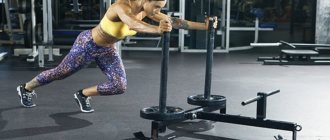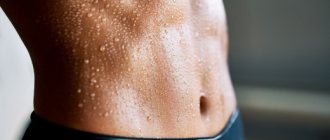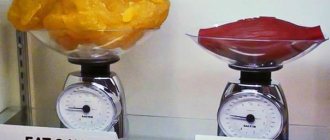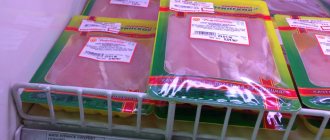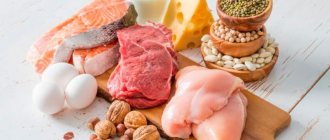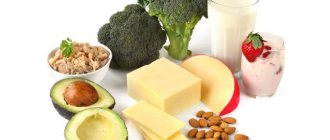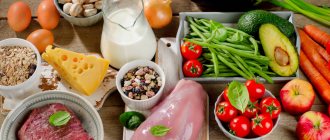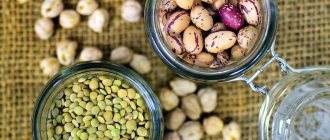It is common knowledge that a balanced diet includes a certain amount of fat. Fat is a compacted mass of organic compounds consisting of fatty acids.
Of course, the calorie content of fat is extremely high, but animal fat performs an important function as an energy reserve in the human body. Despite the high calorie content of fat, it is used in cooking for the preparation of various foods. But fat, which is found in nature, is not only a necessary food product. It is actively used in everyday life, for example, in the industry for the production of lubricants and in cosmetology.
Fat doesn't make you fat
The fashion for low-fat products has become widespread in the last ten years. People strictly monitor the amount of fat in their diet and are firmly convinced that fat makes them fat. After all, having asked the question about how many calories are in fat, they get the answer - 900 kcal per hundred grams of product.
No one monitors the amount of carbohydrates in the diet, since it is believed that calories without fat are safe calories. Meanwhile, the only type of calories that need to be controlled are the calories contained in carbohydrates. Low fat, but high in carbohydrates - this is the most “full” diet of all.
Products whose packaging indicates a calorie content of 100 kcal per hundred grams do not necessarily provide the body with 100 kcal of energy. The calorie content of foods does not indicate the real, but the possible amount of energy that the body can receive. The actual amount of energy depends on what kind of product it is. If these are carbohydrates, then the body will immediately use 100 kcal of energy or store it as fat reserves. If these are fats and proteins, then first they are used as building material for cell renewal, and what remains is used for fuel or stored as fat.
In turn, carbohydrates cannot themselves be used as building materials. Their purpose is to provide energy, which is necessary for biochemical processes in the body. If at this moment the body does not need energy, then carbohydrates are stored in the fuel reserve - adipose tissue.
Today there are more and more calls to limit the consumption of fats. But it should be noted that a lack of fat in the diet is dangerous to health. Limiting fat inevitably leads to a deficiency in the body of proteins and fats - two important groups of nutrients.
Features of fat cell breakdown
Fat cells are found in adipose tissue, and for them to be broken down they must be formed into acids and glycerol. With the help of diet and exercise, decay will begin. Once in the bloodstream, fat moves along with proteins and albumins. Their number represents the viscosity of the blood and the amount of albumin in the blood.
- Fat cells are slightly broken down into energy resources with the participation of muscle contractions.
- Muscle activity helps get rid of fatty acids.
- After fat breakdown, a person’s water mass begins to increase; it exceeds the amount of fat by 8 times.
Losing 0.5 kg of fat in seven days is considered safe. When losing weight, for every 1500 grams of fat per week, the amount of blood should increase by 1500 ml in a couple of days, thereby meaning an increase in blood fluid by 31%. If there is more additional fluid, it will begin to pass through the vessels, thereby complicating the work of the kidneys, heart muscle and internal organs as much as possible.
The process of losing weight should take place in this format: 70% depends on diet, and the remaining 30% on physical activity. It is not good when weight loss occurs only through nutrition. When muscle tissue does not grow, fat is pushed into the liver, complicating its work. A large amount of fat in the liver leads to its terrible disease - cirrhosis. Only sport helps prevent such a hit. In order for muscle tissue to grow properly and fat to go away, pay attention to the amount of vitamins in the body. Taking Omega-3 and Omega-6 fats will help restore your metabolism to its former level.
How to burn calories correctly
For proper and healthy weight loss, there are several rules that must be followed. Since our body consists mostly of water, it is the main source of life. If you find it difficult to drink your daily amount at first, you should start with a small amount. Juices and sodas are not the liquid we need. The next point is your daily routine.
To function well, you need to sleep at least 7 hours. Lack of sleep is the number one cause of obesity as the body experiences stress and fatigue from lack of sleep. When we lack sleep, we are in a bad mood, which is why we often want to eat something tasty and unhealthy. Another rule is to eat little, but often.
To lose weight, it is recommended to eat at least five times a day, and the last meal three hours before bedtime. The calorie content of breakfast should be 50% of the food of the whole day, dinner should be the lightest. We eat fruits in the first half of the day, and also don’t forget about sports.
Then calories will be reduced comfortably, there will be no cravings for junk food, and every day will be lived only with pleasure.
Types of fats and their calorie content
In addition to the question of how many calories are in fat, people are interested in the question - what types of fats exist and what is the calorie content of each type of fat?
Considering the calorie content of fat and its main types, we can distinguish several of its varieties - beef, pork, lamb, fish and chicken. It is believed that pork fat is most often used.
How many calories are in pork fat? The calorie content of pork fat is 900 kilocalories per 100 grams of the original product. Moreover, this high calorie content is not much different from the calorie content of other types of fat.
In addition to the high calorie content of pork fat, it contains useful substances, as well as vitamins A, E and D. In addition, fat is perfectly absorbed by the human body and has almost no contraindications, except for dosage.
Pork fat is divided into several types - premium, first, second grade and extra. For nutrition, extra pork fat is used, which has a transparent consistency and easily melts under high temperature. Pork fat of the highest quality is almost no different from extra fat. Fat of the first category is transparent when melted, while fat of the second category has a cloudy consistency. Moreover, the calorie content of each type of fat is high. The table of calorie content of fats will help you accurately determine the calorie content of each type of fat.
Body fat percentage: female body
10-12%
The minimum level that can only be observed in women involved in bodybuilding. Vessels and muscle grooves are clearly visible. For normal functioning of the body, a fat content of 8-10% is acceptable. What is the reason for this difference compared to the minimum indicator for men (2%)? This is due to the high fat content in the area around the uterus and mammary glands, so there is no need to strive for a male figure, since this poses a health hazard for the fair sex. The girl in the photo is probably at the upper limit because the vessels are hard to see.
15-17%
Corresponds to the second level of fat content in males. This indicator is typical for the majority of models advertising underwear. However, most of them may encounter problems associated with impaired functionality of the body. The muscles of the limbs, shoulders, and abs are clearly visible. Due to the low fat content, the shape of the hips and buttocks is not clearly defined.
20-22%
Most female athletes have this percentage of fat in their bodies. A small amount of fat is observed on the limbs, the abdominal muscles are clearly visible. Minimum level of separation between muscles.
25%
Characteristic of most representatives of the fair sex. Such a woman cannot be called too thin, but not too fat either. A small layer of fat is present on the buttocks, the curve of the hips is clearly visible. This level is typical, for example, at 163 cm height and 59 kg body weight.
30%
Unlike men, in whom fat accumulation is observed mainly in the abdominal area, in the majority of women it is deposited in the buttocks and thighs. The latter are clearly expressed with a rounded shape. 30% fat content is the upper limit for the average woman.
35%
The hips increase even more, and the neck and face acquire rounded shapes. The hips can exceed 100cm, the waist – 80cm. The stomach begins to sag.
45%
This level is characterized by the appearance of noticeable folds and the condition of the skin worsens. Hip circumference can exceed 115cm, waist – 90cm. The shoulders look noticeably narrower than the hips.
50%
The hips become even larger, noticeably exceeding the width of the shoulders. The condition of the skin worsens, the fat is clearly visible. Hip circumference can exceed 115cm, waist – 101cm. Example: if a woman is 163 cm tall and has a body weight of 90 cm, half of it is muscle mass, the remaining 50% is fat.
Fat calorie table
Dieters probably know about all types of fats and their calorie content. After all, the calorie content of fats in the table is indicated exactly per hundred grams of the original product.
Let's look at the caloric content of the most common types of fats used today:
— the calorie content of pork fat is 897.3 kcal per hundred grams of product
— the calorie content of beef fat is 896.3 kcal per hundred grams of product.
- calorie content of chicken fat - 897 kcal per hundred grams of product
- calorie content of cooking fat - 897.3 kcal per hundred grams of product.
Different norms of muscle mass in men and women
You might be interested in:Workouts for pregnant women: pace of training, weight limits in the gym, stretching exercises, indications, contraindications and doctor’s consultations
Nature has predetermined differences in life algorithms between representatives of the stronger and weaker sexes. This explains the significant physiological differences in the structure of their organisms. Therefore, the norm of muscle mass in women will be different from that in men.
The main task of a woman at all times was to bear offspring and give birth to children. To achieve this, evolutionary processes have formed in women a special body structure and unique life cycles that ensure the continuation of the human race.
These features include poorly developed upper body muscles that are difficult to train. To build them up, ladies need to put in a lot of effort. Against this background, a powerful and developed lower body stands out, in which the bulk of the muscle mass in women is concentrated. Legs and thighs are the main carriers of muscles in the fair sex.
How many calories are in 1 kg of fat?
Now many people know what the calorie content of each type of fat is in one hundred grams. Then how many calories are in 1 kg of fat? In fact, 1 kg of fat contains 9000 calories. We are talking about pork fat.
How many calories are in 1 kg of beef fat? 1 kg of beef fat contains almost the same amount of calories - about 9000 kilocalories.
How many calories are in 1 kg of cooking fat? Calories 1 kg of cooking fat contains 9000 kilocalories.
As you can see, the calorie content of fat per kilogram is almost the same for everyone.
Advice from experienced trainers and nutritionists
For a normal weight, a suitable percentage of body fat is a prerequisite. And first of all, you need to set a goal not just to lose excess weight, but to change your lifestyle.
Proper nutrition for weight loss
Six steps to do it:
- Start exercises with light weights. Let the muscles get used to the load.
- In the gym, you first need to warm up and stretch, then start exercising.
- During the first 3 weeks, you should exercise 3 times every 7 days, loading all the muscles of the body.
- After a month, each workout, work separately on the arms and chest, back and legs, and torso. And so every day!
- After this, you can train as much as you need, but you cannot load the same muscles more than once every 1.5 days.
- You need to eat right. Then within a few months the result will be visible. The clothes will be too big and the beer belly will go away.
To notice that a man has lost weight, he needs to wear a tight-fitting T-shirt before classes. After a month, it will be just right, and in another 30 days it will be great
This is a real incentive to lose weight! It’s just important to remember that the abs will only be visible if you completely change your lifestyle
Description of fat percentage formulas
US Navy method
To enter the US military forces, everyone must meet certain parameters. The most important of these is body fat percentage, not weight. All US military units calculate this indicator. Depending on the division, the formulas differ slightly. Height, neck, waist and hip circumference are used for calculation.
Covert Bailey method
The method appeared recently, he was presented in his book “Slim or Fat?” popular sports doctor Covert Bailey. Moreover, the calculation is made differently depending on age. The measurements of the thighs, thighs, legs, wrists and age are used to determine the percentage of fat.
Based on BMI
Method based on BMI (body mass index, BMI). One of the most common methods is based on height and weight and age. But after 30 years of age, the accuracy of this formula decreases (it gives higher values than it really is). Body Mass Index Calculation
BMI (BMI) and new body mass index (new BMI)
YMCA method
The method was developed by a youth volunteer organization, YMCA (YMCA, Youth Christian Association), whose branches are located in 130 countries around the world. Only weight and waist circumference are used for calculation.
Add. YMCA method
This is an expanded YMCA method, which is based on a larger number of parameters - weight, wrist circumference, waist, hips, forearm.
Average
The average is calculated as the arithmetic mean of all the above methods. Taking into account the possible inaccuracy of +-3% for each method, calculating the average will give results that are closest to real data.
Best answers
snow1eopard:
Really, the planted heart will be just as real. Let me help you with the calculations. 1 kg of fat is 9000 calories. We eat only boiled food without broth or steamed food. So, in order to lose fat, we need aerobic exercise, because dumbbells, kettlebells and other similar things will not burn fat so effectively. Aerobic exercises include: running, walking, swimming, cycling, jumping rope, hoop. The most effective of all of these are: running, swimming, cycling and jumping rope. And so how much and what do we need: Running at a speed of 18 km/h 1280 per hour Jogging at a speed of 12 km/h 920 per hour Cycling at a speed of 20 km/h 410 per hour Swimming 50 m/min 500 per hour Jumping rope 750 per hour Walking at a speed of 5-6 km/h 320 per hour
So, to lose 5 kg we need to burn: 5 * 9000 = 45,000 calories Running at a speed of 18 km/h 45000 / 1280 = 35 hours Jogging at a speed of 12 km/h 45000 / 920 = 49 hours Cycling at a speed of 20 km /h 45000 / 410 = 109 hours Swimming 50 m/min 45000 / 500 = 90 hours Jumping rope 45000 / 750 = 60 hours Walking at a speed of 5-6 km/h 45000 / 320 = 140 hours
By the way, all this is provided that we do not eat more than we usually ate. But, since appetite increases, usually a person begins to eat more in any case, which is why the number of calories burned is already the same as described above.
Now it’s clear why this is unrealistic in 1.5 weeks?
I ride an exercise bike 1.5 hours a day (40 km (20 in the morning, 20 in the evening)) at a speed of 24 km/h, I burn about 600-700 calories, I want to eat more than ever, so I eat more than before, I only eat boiled food, a week , it takes 500-700 grams. So to speak, slowly, but uphill)) ) already - 3 kg) Of all the aerobic exercises, cycling puts the least strain on the heart, so my choice fell on it, but men definitely need to ride straight (i.e. so that the body is perpendicular semi), otherwise there will be a deterioration in potency, and every 25 minutes take a break for 5 minutes. With any type of load, the pulse should not exceed 100 times per minute, otherwise the planted heart is guaranteed; only athletes or people who have been training for a long time can afford more.
URU:
cardio equipment. Your nutritionist will be the best person to advise you.
RAZZMATAZZ—LED ZEPPELIN`FAN:
Amphetamine will help you. There is no other way to achieve such speed. 5 kg, but in 7-10 days? Only amphetamine!
Natasha *######*:
Or maybe run around in a down jacket?
Trd:
Unreal.
Determination by eye
In the basic texts of Zozhnik - “ ” and “ ” we show these photographs, from which you can clearly understand the example of fat level.
By looking at them and yourself in the mirror as objectively as possible, you could imagine and roughly determine your fat percentage, and at the same time see how you can change if you reduce/increase it.
The age-old question of beginners, “how to pump up abs?” is also related to the level of fat. - Everyone has six-pack abs, but they only become visible at a certain level of fat. Depending on the specific case, an athletic physique and sculpted abs are visible for men at a level of 6-13%, for women - 14-20%, and obesity begins at figures when fat accounts for a third of body weight or more.
Normal muscle mass in women
You will be interested in: Drooping lip: causes, description of symptoms with photos, correction, effective exercises, step-by-step instructions for implementation, regularity and lip lifting
It is quite difficult to express the muscle norm for a woman as a percentage. It will change due to age, height and race. Ideally, the percentage of muscle mass in women should be about 40. That is, if a woman weighs 60 kg, then 24 kg of this weight should be muscle. However, on average this percentage rarely exceeds 36-37.
The structural features of the female body are such that the bulk of the muscles are distributed below: the hips, legs and lower abs swing much more easily than the muscles of the arms or chest. This is due to the natural purpose of procreation.
By the way, it is precisely because of the need to accumulate energy for the child that a woman needs to make more efforts to get rid of fat reserves. The body is extremely reluctant to part with what it has accumulated, secretly awaiting the onset of hungry days. And this can only be overcome through your own perseverance and hard work on yourself.
